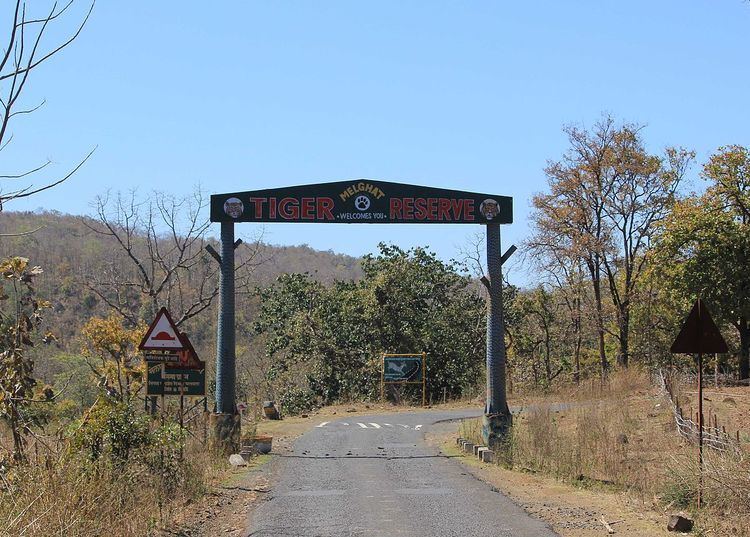Phone 0721 266 2792 | ||
 | ||
Similar Hotel Harshaw, Satpura Retreat, Green Vallies Resort, Gawilghur, Wan Road Railway Station | ||
Increased number of tigers at melghat reserve
Melghat was declared a tiger reserve and was among the first nine tiger reserves notified in 1973-74 under the Project Tiger. It is located at 21°26′45″N 77°11′50″E in northern part of Amravati District of Maharashtra State in India. The Tapti River and the Gawilgadh ridge of the Satpura Range form the boundaries of the reserve. In 1985 Melghat Wildlife Sanctuary was created. The Tapi river flows through the northern end of the Melghat Tiger Reserve, through a forest which lies within the catchment area of the river system. Many different kinds of wildlife, both flora and fauna, are found here.
Contents
- Increased number of tigers at melghat reserve
- Internal view of melghat tiger reserve india
- History
- Geography
- Fauna
- Population
- Tourism
- References
Gugamal National Park, which forms the core area of the reserve, has an area of 361.28 km2. carved out in 1987.
Internal view of melghat tiger reserve india
History
There are passes in Melghat that invaders from the north traversed to reach Berar, where the Imad Shahi dynasty had been founded in 1484. The historic forts, Narnala and Gawilgarh, guarded the main east-west ridge. In 1803, in the Second Maratha War, Colonel Arthur Wellesley, who later became the Duke of Wellington, captured the Gawilgarh fort from the Marathas.
Geography
At the northern extreme of the Amravati district of Maharashtra, on the border of Madhya Pradesh, lies the Melghat in the South-western Satpura mountain ranges. Melghat means 'meeting of the ghats', which describes the area as a large tract of unending hills and ravines scarred by jagged cliffs and steep climbs.
The Melghat area was declared a tiger reserve in 1974. Presently, the total area of the reserve is around 1677 km2. There are no villages in the core area.
The forest is tropical dry deciduous in nature, dominated by teak (Tectona grandis). The reserve is a catchment area for five major rivers: the Khandu, Khapra, Sipna, Gadga and Dolar, all of which are tributaries of the river Tapti.
Fauna
The main fauna found here are Bengal tiger, Indian leopard, sloth bear, Ussuri dhole, Indian jackal, sambar, gaur, barking deer, nilgai, chital, chausingha, ratel, flying squirrel, wild boar, langur, rhesus monkey, porcupine, pangolin, mouse deer, python, otter and blacknaped hare.
Population
There are 61 villages in the reserve, all outside the core area. 22 are in the buffer zone and 39 in the Multiple Use Area (MUA). Human population in the buffer zone and MUA is 11024 and 15642, respectively, as per 1994 census.
The inhabitants are mainly tribal, largely of the Korku tribe (80 per cent) and others like Gond, Nihal, Balai, Gaolan, Gawali, Halbi, Wanjari, etc. All inhabitants depend on the forest for bona fide domestic needs of firewood, timber, fodder, medicinal plants, and non-timber forest products like fruit, flowers, gum and medicinal plants. Their main source of income is from labor and rainy season agriculture. They augment their income by collecting non-timber forest products like Mahuali, flowers, seeds, charoli, gumcula, dhawada, tendu-leaves, and Musali (a medicinal plant).
Tourism
Melghat, located in the Amaravati district of Maharashtra, is a tiger reserve wildlife sanctuary. Melghat Tiger Reserve is located on the southern offshoot of the Satpura Hill Range in Central India, called Gavilgarh Hill. It is 225 km west of Nagpur. It was established as a wildlife sanctuary in 1967, and was declared a tiger reserve in 1974. It was among the first nine tiger reserves notified in 1973-74 under Project Tiger, a wildlife conservation project initiated in India in 1972 to protect Bengal tigers.
